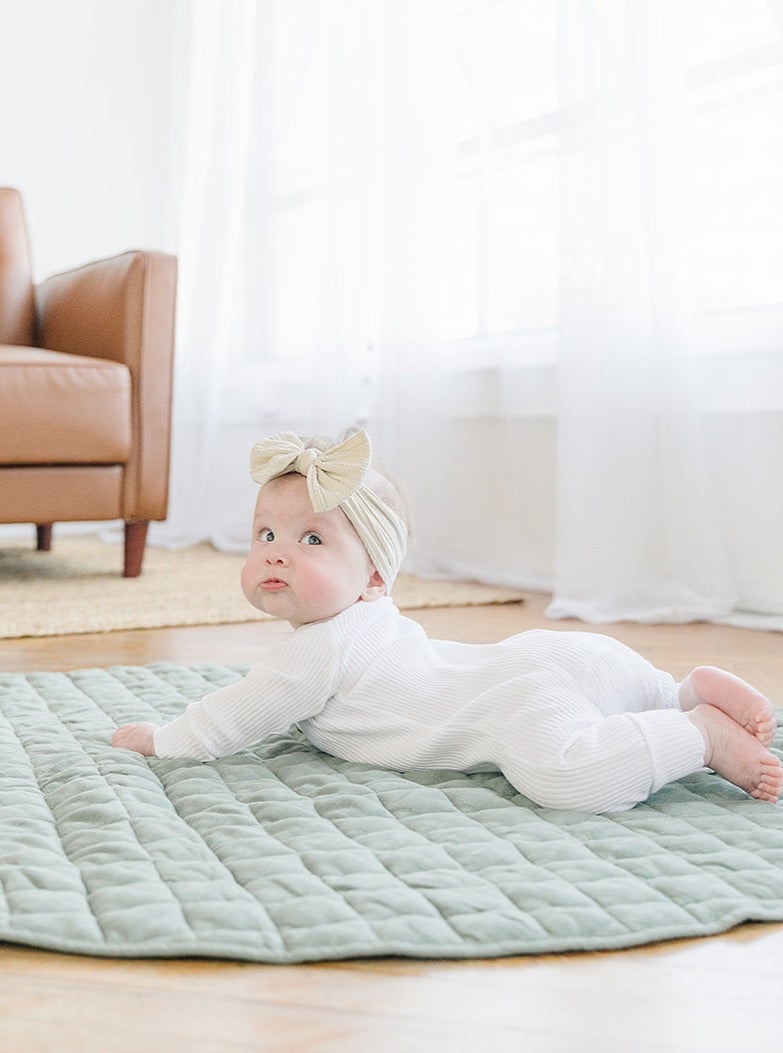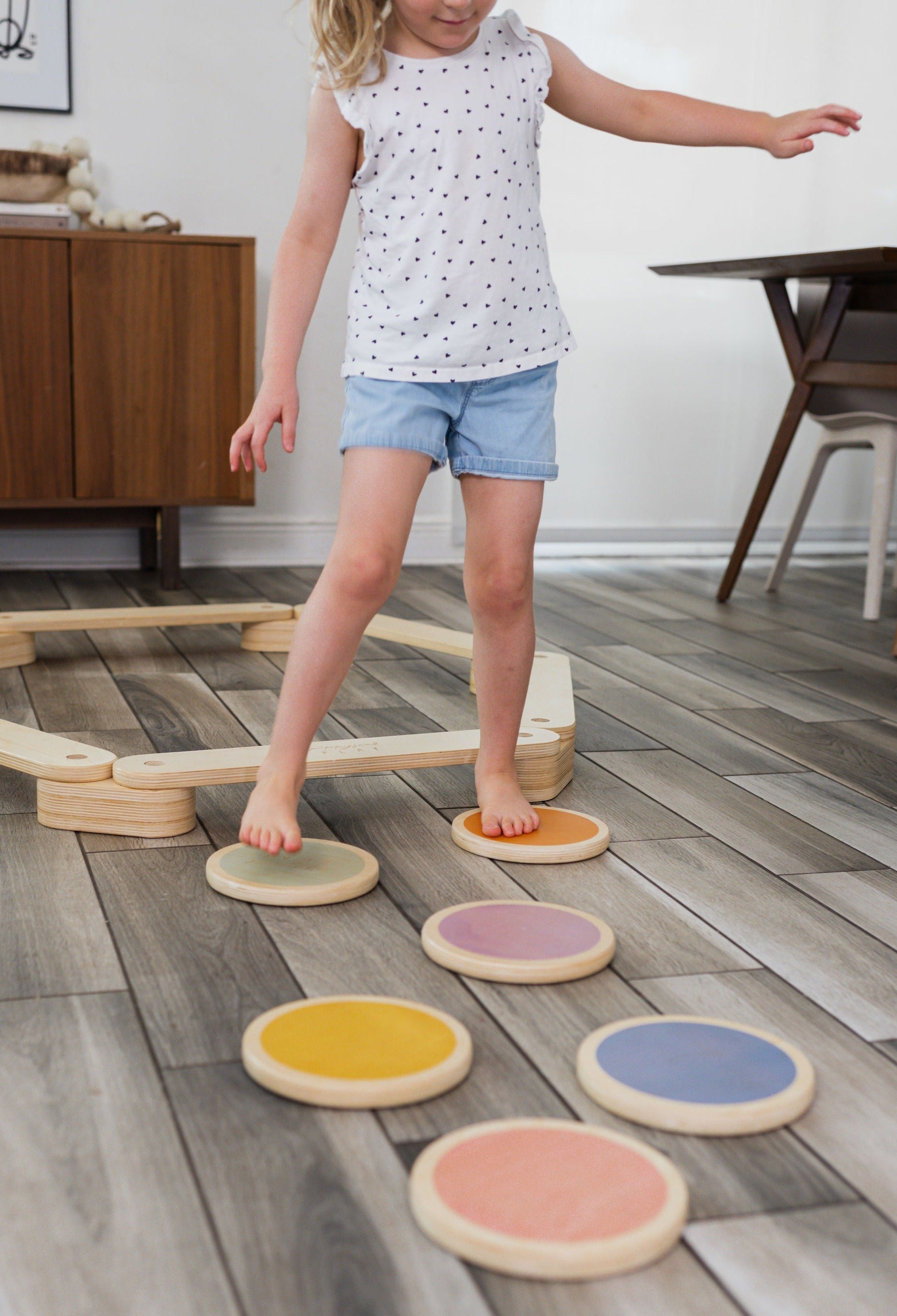Simple Tips for Picking the Right Baby Play Mat

Choosing the right baby play mat doesn’t have to be confusing. With so many options like foam play mats, tummy time mats, activity gyms, and foldable mats, it’s easy to feel overwhelmed. But with a little guidance, you can find the perfect mat that fits your baby’s needs, your home, and your lifestyle.
From tummy time to toddler tumble sessions, the best play mat for babies supports movement, learning, and comfort. In this guide, we’ll break down what to look for, which features matter, and how to choose a mat that grows with your child, without all the fluff.
Know Which Baby Play Mat Fits Your Baby’s Stage
Babies have different needs depending on their age and development. The baby play mat you choose should match your baby’s current stage and allow space for future growth.
1. Newborns Need Comfort and Support
Newborns spend lots of time lying down. A soft activity play mat with a gentle cushion is best for early tummy time. Look for a baby mat that supports the neck and head, and consider adding a Boppy tummy time prop for extra help during the first few weeks.
2. 3 to 6 Months: Time to Explore
At this age, babies begin to reach, grab, and roll. Choose a baby gym play mat or activity gym with hanging toys to help them stretch and build coordination. Features like mirrors, crinkly fabrics, and even a piano tummy time baby activity mat can make playtime more fun.
3. Crawlers Need Room to Move
When babies start crawling, they need a bigger play space with a safe surface. A foam play mat for a baby or a reversible foam mat provides enough room and protects against bumps. These floor mats are great for movement and are easy to clean.
4. Toddlers Need Durability
Once your baby becomes a toddler, things get more active. A larger mat for toddlers or a gym mat gives them the room they need to move, jump, and tumble safely. Look for a foldable play mat with strong materials and a solid grip on the floor.
5. Long-Term Options that Grow with Baby
A stage-based option like those from Lovevery or a play mat baby with detachable toys works well from birth to toddler years. Look for play kits that include infant and toddler baby toys, designed for ages 3 to 24 months.
Pick Practical Features for Everyday Use
Now that you know what type of mat to get, think about how it fits into your daily routine. Good baby playmats make life easier, not harder.
Easy to Clean
A machine-washable or washable baby activity mat is a must for newborn messes.
For water-resistant options, go for a foam playmat or foldable baby play mat with smooth surfaces.
Space-Saving and Foldable
If you’re short on space, choose a foldable play mat that you can tuck away when not in use.
One-piece crawling mats or compact activity mats work well in smaller homes.
Stylish for Shared Living Areas
Look for mats that double as a rug or area rug.
Brands like House of Noa or Totter and Tumble offer designs that look good in any room. You might also want to check out a mat from Totter that blends style and comfort.
Playpen-Friendly
If you’re using a baby playpen, find a playpen mat for infants that fits the size exactly. This prevents shifting and keeps your baby’s activity space secure.
Choose Features That Support Learning and Development
The right baby play mat can help your child grow through play. Here are a few things to consider when it comes to stimulation and development.
1. Built-in Sensory Play
Mats with textures, mirrors, or sounds offer more than comfort. Sensory baby toys that are attached to the activity gym keep your baby curious and engaged.
2. Toys That Encourage Motion
Choose mats with hanging toys or overhead arches like in baby gyms. These encourage reaching, kicking, and rolling — all important for motor development.
3. Music and Light Options
A play piano gym with musical features or a piano tummy time baby activity mat helps your baby link actions with sounds, making learning playful.
4. Water Mats for Sensory Tummy Time
A premium baby water play mat or water play mat for infants adds movement and fun to tummy time. Floating shapes move as your baby touches them, encouraging exploration.
Focus on Safety, Comfort, and Quality
Comfort and safety go hand in hand. Make sure the baby play mat you choose supports safe play for both infants and toddlers.
1. Pick the Right Materials
Make sure the mat is made from baby-safe materials like organic cotton, silicone, or EVA foam. Avoid anything with strong odors or unknown plastics.
2. Choose Padded and Stable Surfaces
For crawling babies and active toddlers, padded cotton or thick foam baby mats give extra comfort. These reduce the impact of falls during play.
3. Safe for All Floor Types
Using a mat on tile or hardwood? A grippy bottom or foam play mat adds safety and prevents slipping, especially in high-traffic areas.
4. Durable Enough for Daily Use
Look for something that holds up over time, from floor play to daily playtime sessions. High-quality foam playmats or baby gyms with strong stitching are worth it.
5. A Complete Play Area
Set up a full play area with a mat, some soft pad pieces, and toys for 3 to 24 months. Add wooden and plastic toys, blocks, or a baby gym to complete your space.
Start Simple, Play Smart
Choosing the right baby play mat doesn’t have to be complicated. Focus on your child’s age, the available space, and how easy the mat is to clean and use. From tummy time mats to activity gyms, the best mats support movement, comfort, and safe exploration. Whether you’re picking a foam play mat, a stylish rug, or a full baby gym, the right choice can help your baby grow, play, and thrive, from newborn to toddler.
At Poppyseed Play, we make it simple for you to choose safe and beautiful play mats that match your home and support your baby’s development. Reach out to us anytime. We’re happy to help you find the perfect fit.
